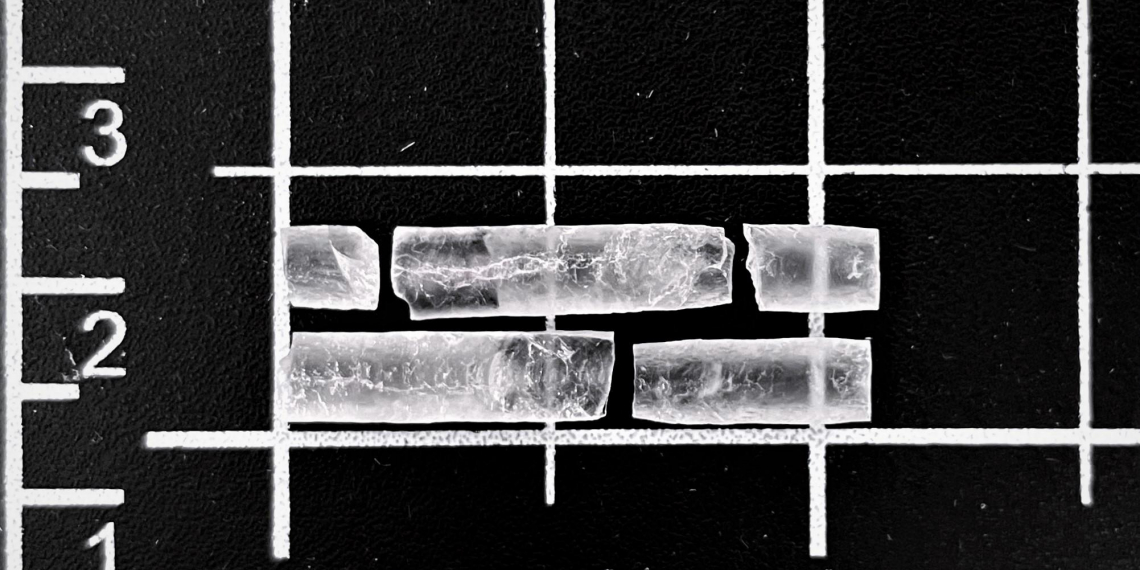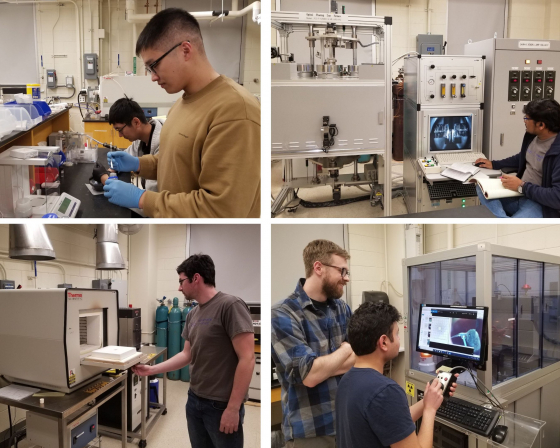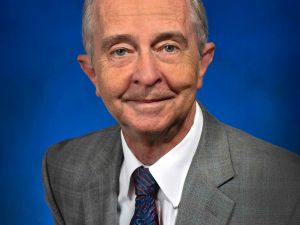Sara Haravifard Creates the Extraordinary
What differentiates a chef from just another cook? It’s the capacity to use common ingredients to create extraordinary results. Sara Haravifard, William M. Fairbank Assistant Professor of Physics and Assistant Professor in the Thomas Lord Department of Mechanical Engineering and Materials Science, is a chef herself. Using common elements from the periodic table, she creates novel materials with extraordinary properties.
In her seven years at Duke, Haravifard has built one of the best laboratories in the nation to design, develop and synthesize novel exotic quantum materials. She and her team create new compounds, most often in the form of crystals, aiming to develop materials that exhibit properties typically found only at the quantum, or sub atomical, level such as entanglement and superconductivity. And it all starts with picking the right ingredients.
The first step in creating a new material is determining which properties you would like it to exhibit.
“It's like cooking,” Haravifard said. “If you want to come up with a recipe, you first want to know what you're aiming at. Is it going to be vegan, is it going to be vegetarian or do you want to have a steak? All of that matters to decide which ingredients, or in my case which elements I am going to pick from the periodic table.”
Once the right elements are picked and mixed in the right proportions, the recipe is ready. But is it any good? And more importantly, does it exhibit the properties you were hoping for?
Creating a new compound, or a new material, is just the beginning. Thanks to highly sophisticated equipment, Haravifard and her team have a cutting-edge ability to test and describe the physical and chemical properties of each new compound in fine detail.
To characterize the new material, Haravifard’s team puts it under a variety of extreme conditions, such as ultra-low temperatures, very high magnetic fields and very high pressure. This allows the team to observe how this new substance behaves and how it transforms from one state to another.
“Sometimes the quantum features will pop up right at that transition, such as going from extremely cold to extremely high temperatures,” said Haravifard.
Haravifard started building her quantum materials toolkit in her second year of college at MacMaster University, in Canada. Inspired by her optics professor and armed with a fellowship from the Canadian government, she joined his research lab and learned how to pick the right elements and the right parameters to build a high-quality sample in crystal form. That same optics professors advised her through her Master’s degree, then became her Ph.D. advisor.
By the time she graduated, her toolkit was impressive, but not complete. A joint postdoctoral fellowship between the University of Chicago and Argonne National Laboratory allowed Haravifard to acquire extra tools.
“I got familiar with X-rays,” she said, “and also some more measurements that could be done in the lab itself, like how to look at the resistivity, how to go to very low temperatures. I already knew how to prepare samples, so now you're looking at somebody who does neutron scattering, X-ray work, as well as some very sophisticated in-house measurements.”
“At Duke, I am using basically everything that I learned and combining it into a lab where we can design, synthesize, and characterize new materials in-house,” she said. “And it is one of the best laboratories in the country to do that.”
Being one of the strongest quantum material labs in the country gives Haravifard’s team an edge in more ways than one. To fully describe and characterize a quantum material, they often requires the use of X-ray and Neutron beams, such as those from Oakridge National Laboratory. Given how few such beams are, competition for their usage is fierce, but having a strong record of productivity increases the chances of being selected and awarded time to use them.
Competition is the opposite of Haravifard’s research philosophy, though. Her team is fully collaborative, with undergraduate, Ph.D. students and postdocs all working together. Her team works closely with theorists from different institutions in developing models for new materials. And given her sophisticated equipment, laboratories across the world send Haravifard new compounds to be characterized.
This collaborative spirit stems from her own research path, which greatly influences her mentoring and teaching styles.
“My advisor played a key role in recruiting me to physics,” she said, “because right away he had projects that were fun and not too complicated for me. So I got to start a project, finish it, have a product, and be proud of myself.”
“I think it's very important for undergraduate researchers to have projects they understand well, and where they can be successful.”
She is careful with her definition of success. “Success could be a negative result! We have to make sure, specifically with younger researchers, that they understand that ‘no result’ is not a failure. You can make it into a very important contribution to the community so that nobody else spends three months trying to get exactly what we were trying to do. Instead, we can provide some suggestions for them to try something different.
“That mindset helped me take the pressure off of myself. If nature says, ‘No, it doesn't’, I don't have to take it personally. That data point is still science, and I should be happy about it.”






